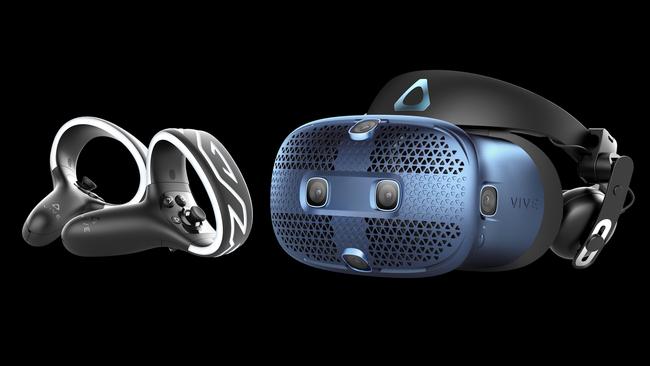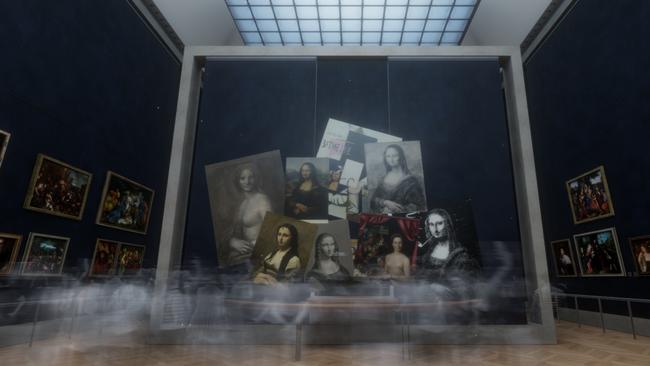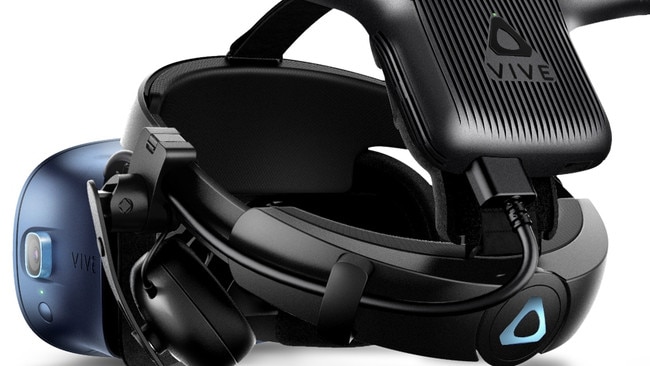HTC Vive Cosmos virtual reality headset is out of this world
Leave it all behind with the virtual reality of the new HTC VR headset.

The amazing world of virtual reality lets you instantly be somewhere else without the pain of getting there. Last week, I had a lightning trip to The Louvre. There was no lengthy and uncomfortable time in an aircraft, no airfares, and no battling through Charles de Gaulle Airport, in Paris.
Of course, I wasn’t really there, but when I put on a new HTC Vive Cosmos, I could experience jumping from location to location in the Louvre courtyard area and from there to a large gallery of classic masters housed inside. They included Leonardo da Vinci’s Mona Lisa, behind its reinforced transparent security screens.

The sense of realism with Vive Cosmos - the new HTC VR headset - is great thanks to the 2880 x 1700 combined pixel resolution. This is up from 2160 x 1200 pixels on the original Vive. The use of LCD panels means there’s less evidence of the pixels, the screen door effect when looking around a virtual environment.
READ MORE: Feeling the VR action | How to tell your one reality from the other
That’s not the only change. When you set-up the VR experience at home, you need a dedicated 2 x 1.5 metre space. However, you no longer have to place sensors around the room, known as lighthouses or base stations. Original VR systems would calculate your location using your position relative to these stationary sensors.
HTC has axed them and instead, six camera sensors on the new HTC Vive Cosmos establish your location. This is called inside-out tracking and cuts the set-up time. HTC says this is the first time it has offered inside-out tracking on consumer VR headsets.

Vive Cosmos however is not stand-alone. The headset is connected by cable to a desktop computer and relies on that connected PC for graphics processing. The result is better screen resolution than a headset that tries to offer some limited graphics processing itself.
HTC said you’ll need a graphics card with the power of Nvidia GTX 1080 graphics and above for this headset to work.
HTC ANZ country manager Thomas Dexmier said that by Christmas, the firm intends to offer for sale a wireless adaptor sale that effectively cuts the cable. “You will be fully wireless, high resolution with no external base stations and you can run around,” he said. “There’s nothing holding you back.” The wireless kit includes an external PCI card.
The headset is more comfortable than its predecessor. The original Vive had a strap at the back that resulted in the headset sitting on your nose. The Vive Cosmos places the weight on your head. There’s a winder at the back which tightens it on the sides of your skull.
The front section of the headset is like a visor on a pivot. You pull it up if you want to interact with the real world. I felt more comfortable about using the Vive Cosmos for longer, without weight on my face.

Comfort is further aided by a small fan at the front that circulates air around your face. The headset doesn’t get hot. HTC said you can comfortably use the Vive Cosmos for 30 to 40 minutes at a time.
The unit also has built-in stereo headphones.
HTC said its Viveport application store has nearly 3000 apps offering virtual reality experiences. They are mostly games. You can subscribe to Viveport Infinity for $17.99 a month to access around 600 of them.
If you liked visiting the Louvre in VR, HTC said its arts business unit is working with museums across the globe to take the experience further.
The Taiwanese firm is also gearing to deliver VR experiences over 5G. Graphics rendering will occur in the cloud.



To join the conversation, please log in. Don't have an account? Register
Join the conversation, you are commenting as Logout